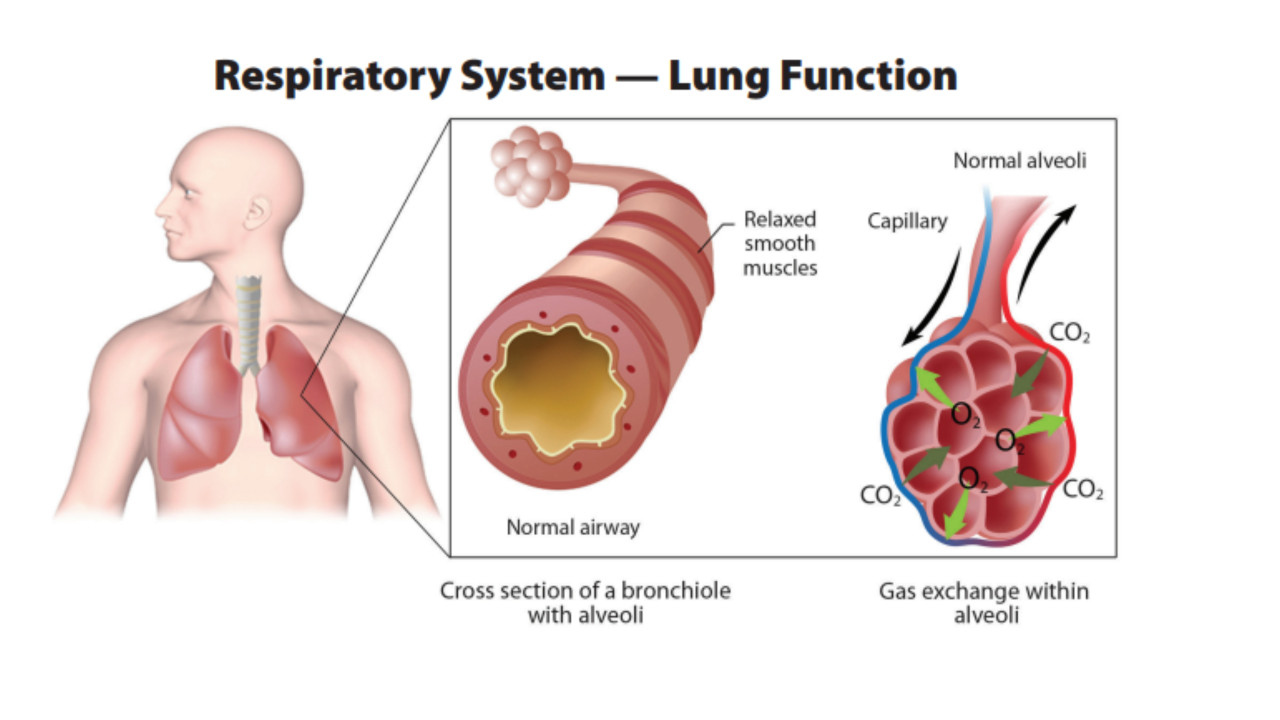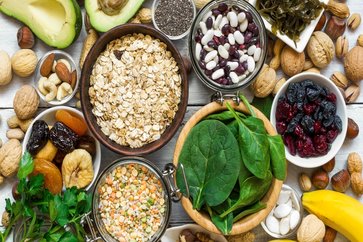Pranavaha Srotas (Respiratory System ) In Ayurveda: Pathways for Prana
According to Sushruta, Pranavaha Srotas are two in number. Their roots of origin are located in the Hrudaya (heart) and the Rasa Vahini Dhamanis (the vessels or channels, or terminal branches of arteries that transport nutrition to various parts of the body).These channels play a vital role in the transportation of Prana (vital life force) throughout the body. 
The proper functioning of these Srotas ensures the nourishment of the body and the regulation of vital functions, such as respiration and circulation, which are essential for sustaining life. Dysfunction in these channels can lead to respiratory or cardiovascular disorders.
Moreover, Pranavaha Srotas are deeply interconnected with the nervous system, influencing mental and emotional well-being, as they also regulate the flow of energy vital for brain functions.
Any imbalance or blockage in these channels can manifest in symptoms related to both physical and mental health. Understanding their function is essential for diagnosing and treating disorders linked to vitality and life force.
- Aakroshana – Screaming: This symptom indicates distress and the body’s attempt to signal a lack of oxygen or energy, often resulting from impaired respiratory function or low Prana supply.
- Vinamana – Bending of body: Bending of the body often occurs as a response to difficulty in breathing or a feeling of tightness in the chest, showing that the body is struggling to maintain essential physiological functions.
- Mohana – Perplexity: Perplexity or confusion occurs when the brain is deprived of adequate oxygen or nutrients, affecting cognitive function and mental clarity.
- Bhramana – Giddiness: Giddiness or dizziness is a common sign of oxygen deprivation, often linked to disrupted blood circulation or low Prana flow, leading to an imbalance in bodily functions.
- Vepana – Tremors: Tremors reflect a nervous system response to a lack of essential nutrients or oxygen, as the body tries to compensate for internal instability caused by dysfunctional Pranavaha Srotas.
- Maranam – Death: If oxygen and nutrient supply are completely blocked, the body cannot sustain life, ultimately leading to death as a result of total organ failure and loss of vital functions.
These symptoms collectively indicate a critical disruption in the Pranavaha Srotas, underlining the importance of proper oxygenation and nutrient transport for maintaining life. When these channels are compromised, they lead to a cascade of life-threatening conditions.
Roots of Srotas
Here are the origins of Srotas, which serve as the foundational channels for the flow of vital substances in the body.
According to Charaka, the roots of Pranavaha Srotas are located in the Hrudaya (heart) and the Maha Srotas (greater srotas), which encompass the Amashaya (stomach) and Pakwashaya (small and large intestines).
Charaka’s view aligns with that of Sushruta, who also emphasizes the importance of the heart in the distribution of vital nutrients.
2. Role of the Heart in Nutrient Circulation
Both Charaka and Sushruta explain that the heart is the central organ responsible for supplying Rasa (nutrient essence) to the entire body. The process begins in the stomach, where Ahara Rasa (nutrient essence from food) is produced.
This essence is absorbed by the small intestine and transformed into Poshaka Rasa, which is then circulated through the heart. From there, it is pumped through the dhamanis (arteries) to nourish the tissues and organs throughout the body.
3. Interconnected Digestive and Circulatory System
The relationship between the stomach, small intestine, heart, and large intestine forms a crucial axis. The large intestine (Pakwashaya) plays an important role in eliminating waste products, ensuring cleanliness and sterility in the body.
The smooth functioning of this interconnected system—stomach, small intestine, heart, tissues, and large intestine—maintains balance and supports overall health.
4. Impact of Disruption on Health
Disruption at any point in this system can lead to digestive issues, nutrient deficiencies, and improper circulation. Such disturbances can significantly affect the body’s vitality and energy.
Therefore, achieving balance and harmony within these processes is essential for the Pranavaha Srotas to effectively distribute energy and nutrients throughout the body. The heart, acting as the central organ, plays a critical role in sustaining life through the proper movement of Prana.
Vitiation Symptoms
The following are the symptoms of vitiation of Pranavaha Srotas, which involve disturbances in the flow of vital energy, impacting both physical and mental well-being.
- Ati srushta shwasam – Prolonged or too long breathing: This indicates an imbalance in the respiratory rhythm, often due to excessive Prana or an inability to exhale properly, causing the body to over-breathe.
- Ati baddham – Short, labored breathing (difficulty in breathing): This can suggest blockage or restriction in the Pranavaha Srotas, causing the body to struggle for air, leading to shallow breaths.
- Kupitam shwasam – Difficult or irregular breathing: This occurs when there is turbulence in the flow of Prana, leading to difficulty in maintaining a steady breathing pattern.
- Alpam alpam shwasam – Frequent, interrupted, or intermittent breathing: This type of breathing indicates irregularities in the intake and expulsion of air, often due to a compromised Pranavaha Srotas.
- Abheekshnam shwasam – Highly disturbed breathing patterns, often looking alarming or scary: This abnormal pattern is a sign of severe disruption in the natural flow of Prana, which can be alarming for the body’s survival mechanism.
- Sa shabda shwasam – Abnormal sounds during breathing (wheezing, whistling): These sounds occur due to obstruction or narrowing of the air passages, which restrict the free flow of Prana, causing noise during inhalation and exhalation.
- Sa shula shwasam – Painful or uncomfortable breathing: Painful breathing often occurs due to inflammation, spasm, or irritation of the respiratory pathways, leading to discomfort when drawing in air.
Below is the role of the heart and lungs in Pranavaha Srotas, which is vital for facilitating the flow of energy and supporting both physical and respiratory functions.
1. Heart and Lung Connection in Respiratory Health
Both Charaka and Sushruta emphasize the Hridaya (heart) as the primary site of Pranavaha Srotas, which includes not just the heart but also the lungs and the entire respiratory system.
This connection highlights the crucial relationship between the heart and lungs in maintaining proper respiratory function.
As a result, heart and lung disorders often manifest with Shwasa (breathing difficulties) as one of their key symptoms, showing the interconnectedness of these organs in respiratory health.
2. Nutritional Imbalances and Their Impact on Respiratory Function
Sushruta’s reference to Rasavahini Dhamanis indicates that nutritional imbalances play a significant role in the onset of Shwasa.
When the flow of nutrients is disrupted, it directly impacts the respiratory pathways, leading to poor oxygenation and impaired breathing.
This highlights the importance of balanced nutrition in supporting both the respiratory and circulatory systems.
3. Digestive and Metabolic Errors Affecting Respiratory Function
The mention of Mahasrotas (the greater srotas) by Sushruta further underscores that digestive imbalances and metabolic errors contribute to disturbances in the Pranavaha Srotas.
When digestion and metabolism are compromised, the availability of essential nutrients and energy needed for proper respiratory function is reduced. This, in turn, can lead to breathing difficulties and further impair respiratory health.
Treating Pranavaha Sroto Dushti (impairment of the Pranavaha Srotas) is essential for addressing dyspnoea (difficulty breathing) caused by heart and lung pathologies, as well as nutritional and metabolic imbalances.
A holistic approach to treatment that restores the balance of air, nutrients, and energy in the body is crucial for improving respiratory function and overall health.
By restoring this balance, the body can function more effectively, ensuring proper oxygenation and vitality.
Causes for Vitiation
The causes of vitiation of Pranavaha Srotas, as outlined in Charaka Vimana 5/10, involve factors that disrupt the flow of vital energy, leading to physical and mental disturbances.
- Kshaya – Depletion of tissues: This occurs when the body loses essential nutrients, weakening the tissues and affecting the normal function of the Pranavaha Srotas, impairing the body’s ability to circulate Prana effectively.
- Sandhaaranaat – Forcibly withholding the natural body reflexes or urges (e.g., not responding to the urge for stools, urine, etc.): Suppressing natural urges disrupts the body’s normal metabolic processes, leading to an accumulation of toxins that obstruct the Pranavaha Srotas.
- Roukshyaat – Intake of dry foods: Excessive consumption of dry foods causes dehydration and reduces the moisture levels in the body, leading to the vitiation of Pranavaha Srotas and respiratory issues.
- Vyaayaamaat Kshudhitasya – Excessive exercise in the presence of hunger: Exercising without nourishing the body first can lead to imbalances in Prana, as the body is deprived of the necessary energy and nutrients needed to perform physical activities.
- Anya daaruna kaarya – Engaging in activities beyond one’s physical capacity: Pushing the body beyond its limits, without proper rest or nutrition, causes strain on the body’s channels, leading to vitiation of the Pranavaha Srotas and overall fatigue.
These causes lead to a disturbance in the flow of Prana Vayu, resulting in various respiratory and circulatory issues. Each of these factors disrupts the delicate balance needed for the proper functioning of the Pranavaha Srotas, affecting the overall health and vitality of the body.
The management of vitiation in Pranavaha Srotas involves addressing the underlying imbalances to restore the proper flow of vital energy, promoting both physical and mental health.
The vitiation of Pranavaha Srotas should be managed according to the treatment protocols for Hridroga (heart diseases), Kasa (cough), and Shwasa (breathing disorders or dyspnoea).
These conditions share a common focus on restoring the proper flow of Prana Vayu, which is essential for the function of the heart and lungs.
Since both organs are integral to the Pranavaha Srotas, their proper functioning is key to maintaining overall health.
2. Addressing Gastrointestinal and Respiratory Symptoms Together
In cases where symptoms related to the gastrointestinal tract, such as loss of appetite, indigestion, bloating, anorexia, regurgitation, and constipation, are observed alongside.
Pranavaha Srotas vitiation or in association with respiratory symptoms, it is crucial to address both the alimentary and respiratory systems simultaneously.
A combined approach ensures that disturbances in the digestive system, which can contribute to the vitiation of Pranavaha Srotas, are properly managed.
3. Restoring Balance through Digestive and Respiratory Treatments
Proper treatment of the digestive system helps eliminate toxins, restore balance, and support the correct functioning of the Pranavaha Srotas.
By addressing both gastrointestinal and respiratory imbalances, the body’s internal harmony is restored, leading to improved respiratory health and overall vitality.
A holistic approach that integrates therapies for both systems is essential in alleviating the disturbances caused by the vitiation of Pranavaha Srotas.
FAQ’s
1. What is the meaning of Pranavaha Srotas?
Pranavaha Srotas is an Ayurvedic term referring to the subtle channels or pathways that transport Prana (vital life force energy), primarily governed by Prana Vata. These channels facilitate the flow of energy throughout the body, especially in the regions of the head, chest, and throat.
2. Where are the Pranavaha Srotas located?
Pranavaha Srotas is believed to be located in the Murdha (head), Ura (chest), and Kanta (throat) regions. These are the areas through which the vital energy, or Prana, circulates to ensure proper physiological and mental functions.
3. What are the 4 types of Srotodushti?
- Srotodushti refers to the disturbance or dysfunction of the srotas (channels). The four types are:
- Vata Dosha: Excess or imbalanced air element.
- Pitta Dosha: Excess or imbalance in the fire element.
- Kapha Dosha: Excess or imbalance in the water and earth elements.
- Rasa Dosha: Imbalance in the fluid or nourishment aspect.
4. What are the diseases of Pranavaha Srotas?
Disorders in the Pranavaha Srotas may include conditions that affect the nervous system or the respiratory system, as both systems are heavily influenced by Prana. Some potential diseases include asthma, dyspnea (shortness of breath), nervous disorders, and psychosomatic issues that involve impaired circulation or energy flow.
5. What is the concept of Srotas?
Srotas in Ayurveda refers to the body’s internal channels or systems through which various vital substances like Prana (life force), Rasa (body fluids), and Ojas (vital energy) circulate. Each Srotas is a distinct system responsible for specific physiological processes, and when these pathways are disturbed, it can lead to disease.
6. What are the diseases of Annavaha Srotas?
Annavaha Srotas are the channels associated with digestion and the transport of food and nutrients. Diseases related to this srotas include indigestion, dyspepsia, gastric ulcers, and irritable bowel syndrome (IBS).
7. How many types of Srotas are there?
Ayurveda identifies 13 primary types of srotas, including those for digestion, respiration, circulation, and more. Some examples are Raktavaha Srotas (blood circulation), Annavaha Srotas (digestive system), and Pranavaha Srotas (respiratory and nervous systems).
8. What are the diseases of Raktavaha Srotas?
Raktavaha Srotas refers to the blood-carrying channels. Diseases associated with this srotas include conditions like anemia, hemorrhage, skin disorders, and blood-related diseases.
9. What is the meaning of Srotas?
In Sanskrit, Srotas translates to channels or pathways in the body through which vital substances flow. These pathways are crucial for the proper functioning of the body’s systems.
10. How many total Yogavahi Srotas are there?
Yogavahi Srotas are pathways that carry yogavahi (energy or substances that enable or support the body’s balance). The total number isn’t universally agreed upon, but they are often considered as part of the 13 primary srotas.
11. What are srotas according to Charaka?
According to Charaka, one of the foundational texts of Ayurveda, Srotas are channels or pathways that carry essential substances like Prana, Rasa, and Ojas, responsible for maintaining health. When these pathways are disturbed, it can result in various diseases.
12. What is srotas in Sanskrit?
Srotas is a Sanskrit term meaning pathway, channel, or passage, referring to the systems or pathways through which bodily substances flow.

























